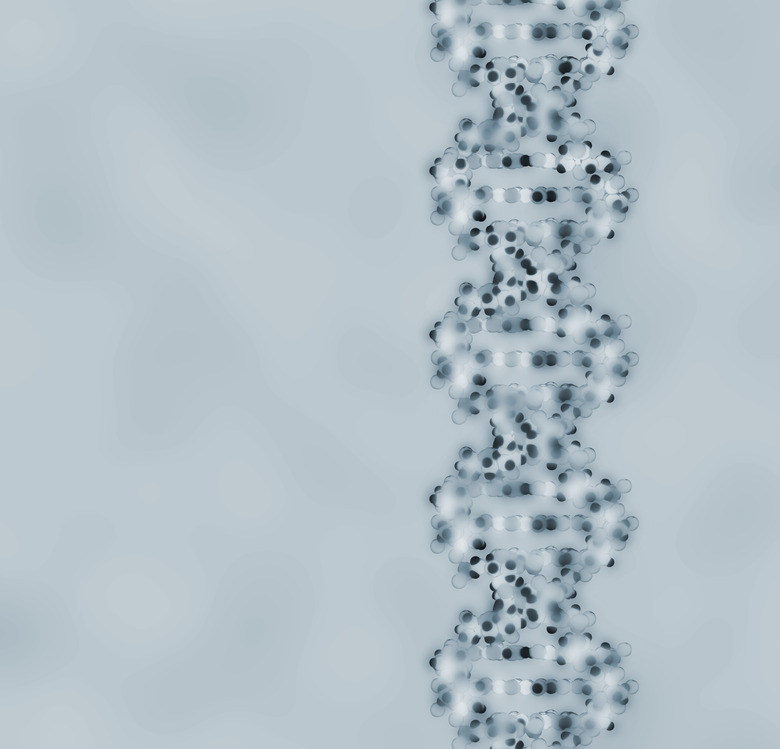What Types Of Molecules Catalyze RNA Splicing?
The molecule responsible for splicing strands of ribonucleic acid, or RNA, is called a spliceosome. Messenger-RNA, or mRNA, is the molecule responsible for copying genetic information from the strand of DNA that codes each organism's protein chains and therefore its physical makeup. Before mRNA is usable for manufacturing proteins, however, spliceosomes must change it from pre-mRNA, which contains unnecessary genes called introns, to mRNA, which no longer contains these additional genes.
Splicing Process
Splicing Process
The spliceosome, a protein complex responsible for splicing RNA strands, assembles in stages, binding to the strand of pre-mRNA one protein at a time. As it binds, it bends the strand of pre-mRNA into an S-shape. Once the spliceosome is fully assembled and the strand of RNA has been bent, the spliceosome can then cut and reassemble the molecule. It cuts out introns, irrelevant genetic sequences, and reconnects the remaining relevant pieces, or exons, to form a mature piece of mRNA. This strand is now ready for translation, or for use in protein synthesis.
Cite This Article
MLA
Moore, Sarah. "What Types Of Molecules Catalyze RNA Splicing?" sciencing.com, https://www.sciencing.com/types-molecules-catalyze-rna-splicing-21804/. 24 April 2017.
APA
Moore, Sarah. (2017, April 24). What Types Of Molecules Catalyze RNA Splicing?. sciencing.com. Retrieved from https://www.sciencing.com/types-molecules-catalyze-rna-splicing-21804/
Chicago
Moore, Sarah. What Types Of Molecules Catalyze RNA Splicing? last modified March 24, 2022. https://www.sciencing.com/types-molecules-catalyze-rna-splicing-21804/
